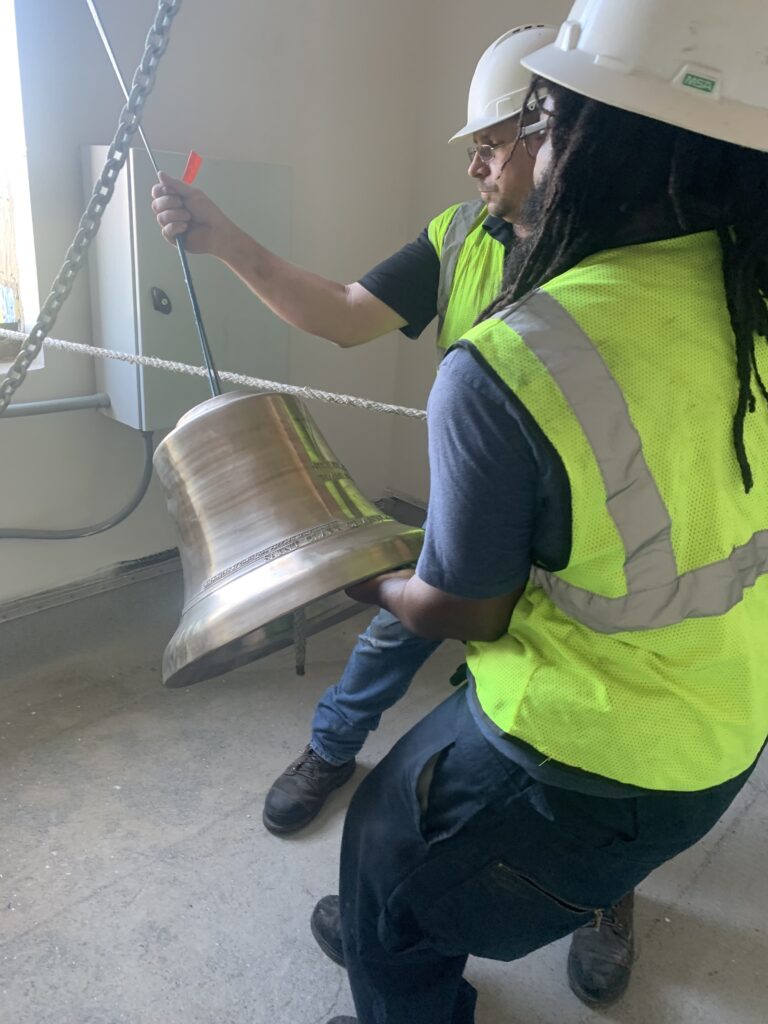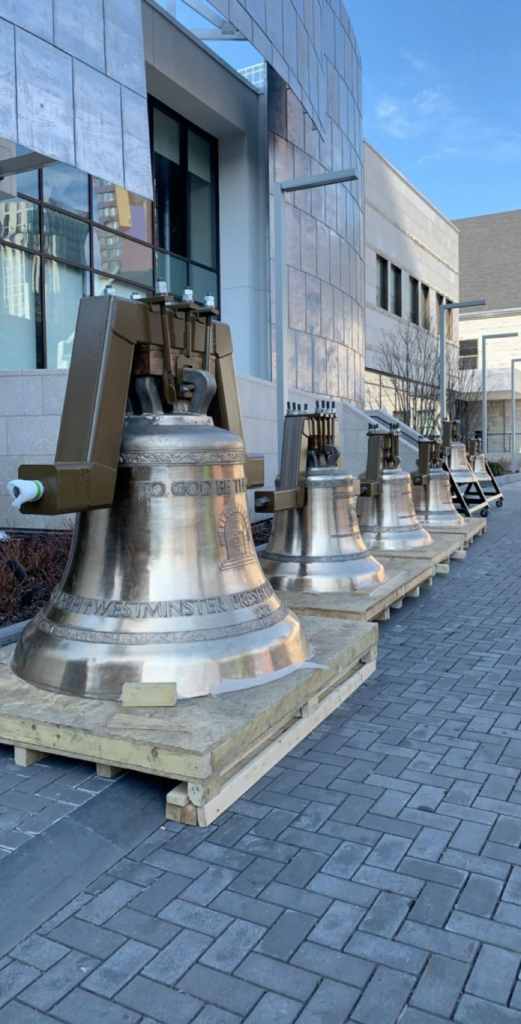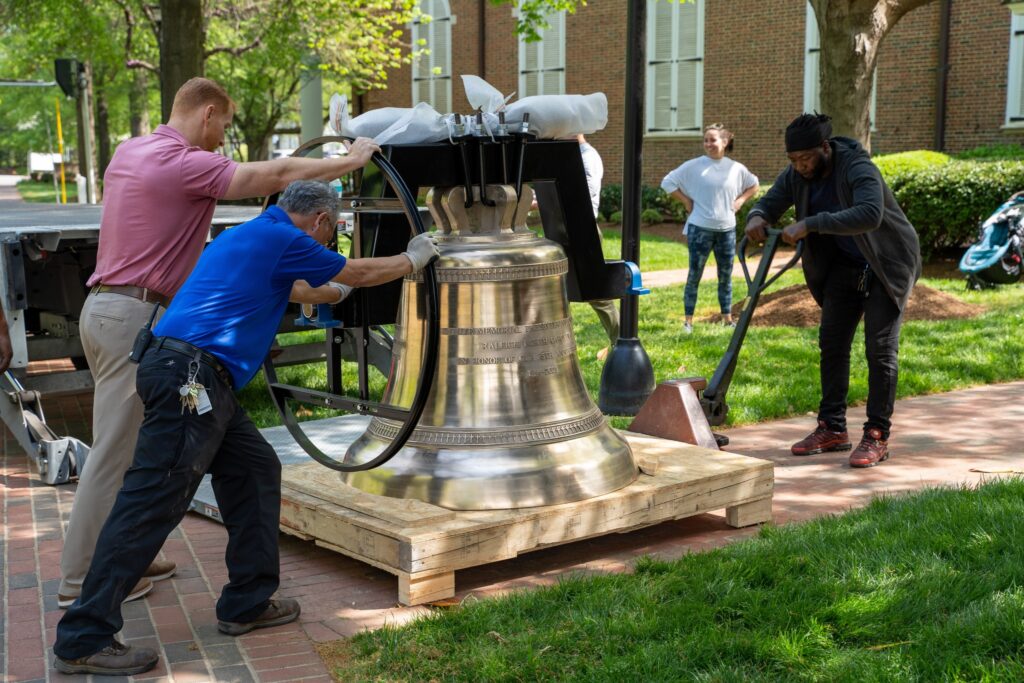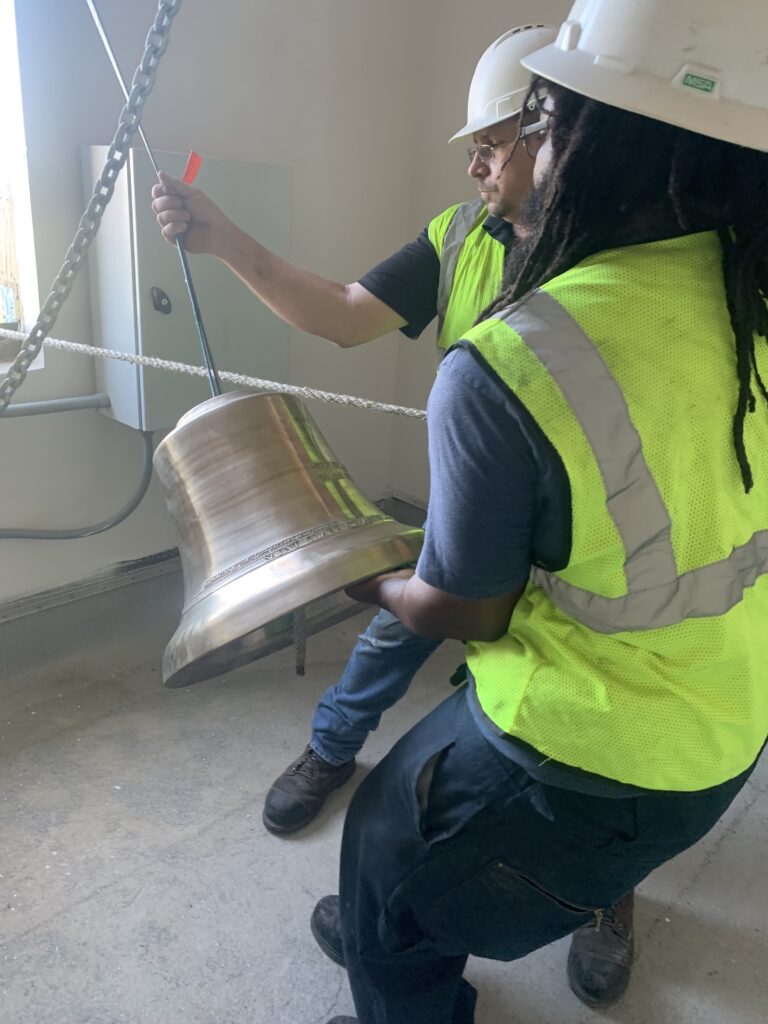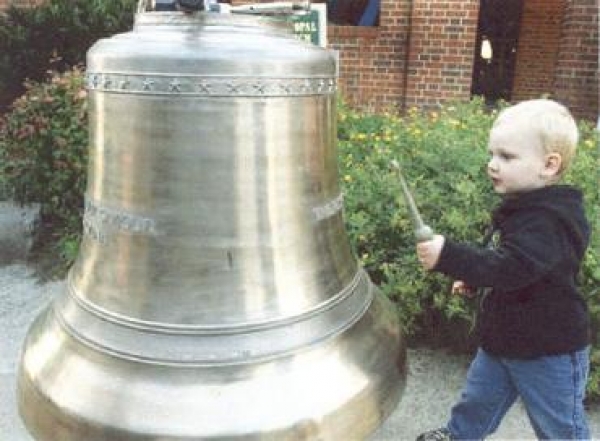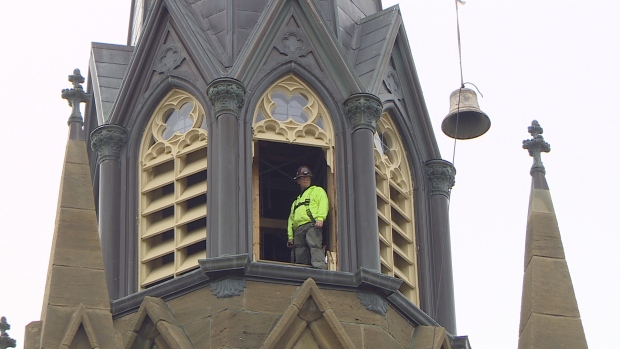Cast Bronze Bells
Cast using the lost wax process, our bells are cast of “bell bronze”, a mixture of 78% copper, 22% tin, for the most beautifully musical bells.
What makes a musically beautiful bell?
- The shape, or “profile” of the bell,
- The casting process of the bell,
- The metal content of the bell,
- The precise tuning of the bell,
- The metal and mass of the bell clapper or striker in relation to the mass of the bell.
There are five especially important factors involved in creating a world class musically beautiful bell.
First is to prepare for the casting of the bell with the correct shape, (profile), of the bell. While in general, the musical note of the bell depends on the size of the bell, particularly the inside volume or space of the bell; it is the shape of the bell that drives toward the final musical beauty of the bell.
The second is that the bell must be cast in the lost wax process, the same process used to cast high quality bronze sculptures. This process leads to not only a strong molecular structure for the bell bronze as it slowly cools from casting, but also the ability to provide permanent, in-relief, beautifully detailed artistic details such as inscriptions, effigies, and other artwork on the face of the bell.
Third, the metal content of the bell is of supreme importance to the musical quality of the bell. The bell must be of “bell bronze” which is composed of a mixture of 78% copper and 22% tin; no other metal produces the warm rich tones as bronze does, rather they produce a shrill or dull unmusical sounds.
Fourth, the precise tuning of the bell is also of supreme importance. While we typically hear only one note per bell, (the prime), based on its size, a bell is unlike any other instrument because it actually produces multiple notes, called partials. Tuning a bell is a time-consuming process that requires the bell founder to be proficient with both a simple tuning fork and high-end digital tuning equipment.
Using a lathe, metal is shaved from inside the bell at various points until the proper tuning is achieved. The bell founder must tune the five lowest partials, at a minimum, to the standard of A3=440 vibrations per second.
From the lowest partial to the highest, the notes are:
· The hum (an octave below the prime or “strike” note)
· The prime (an octave above the Hum)
· The minor third (of the Prime)
· The fifth (of the Prime)
· The octave (of the Prime)
While the prime tone is the most important note of the bell, the hum tone, the minor third and the octave must be tuned with the same accuracy. Of particular interest is the minor third, which is unusual in a musical instrument.
Although the profile and tuning process works to intensify the prime while subduing the minor third, it is the minor third that gives bells their beautiful, melancholy, plaintive and compelling sounds.
Fifth and finally, the metal and mass of the bell clapper or striker in relation to the mass of the bronze bell is of great importance. For the greatest musical result, the bell should be struck with a perfectly rounded mild steel clapper ball or striker head whose mass has a specific weight relationship to the mass of the bronze bell, neither too light, nor too heavy. The bell bronze is hard, the clapper should be of softer mild steel to bring out the best musical sounds. The strike point of the clapper ball or striker head should be rounded to provide the cleanest impact on the bell, transferring its’ mass and momentum energy cleanly into the bell. Often in existing bell renovations, we find that clapper has become flattened where it strikes the bell – this does not produce ta great sound!
A Single bell can ring a call-to-worship / Mass, funeral tolls, wedding peal, hour strikes.
You can ring a single bell by rope, or electrically with a swing motor and / or bell striker and automatic control system.
A Peal of bells:
A peal of bells is considered generally from 2 to 8 bells that can ring together to sound out interesting celebratory peals.
With a peal of bells you can arrange interesting musical combinations, a harmonic peal, or diatonic peal, or other combination in addition to sounding a clock chime melody in advance of your hour strikes.
A Chime of bells:
A chime of bells is considered generally from 8 to 22 bells that together can play simple melodies and songs, in addition to clock chime melodies, hour strikes, wedding peals, funeral tolls, etc.
A Carillon of bells:
A carillon of bells is considered generally to be 23 or more tuned bronze bells that together can play complex carillon music, with depth and range to the instrument based on the number of bells and musical depth of the bourdon bell, (the largest bell) – all in addition to clock chime melodies, hour strikes, wedding peals, funeral tolls, etc.
Each bell installation is different based on the size, space, and structural capacity of your bell chamber or bell tower, your interests and desires, and your budget. The best first step is for us to talk about what you have in mind, to get an understanding of either your existing tower, or your new design drawings. From that, we can begin to provide budget options that make sense for your site and situation.
Start Bell Discussion
Fill out the form below and let’s get started today

